
Modernization
Learn more about government’s intention to modernize the museum to protect our historic holdings and provide better access to our collections.

In a dimly lit projection room tucked above the IMAX® Victoria theatre, Jason St-Louis—pronounced like the city, but with French punctuation as a throwback to his family’s roots in pre-revolutionary Normandy—pauses to give his coworker the two-minute call that signals the final 120 seconds of the 11 a.m. screening of Dinosaurs of Antarctica.
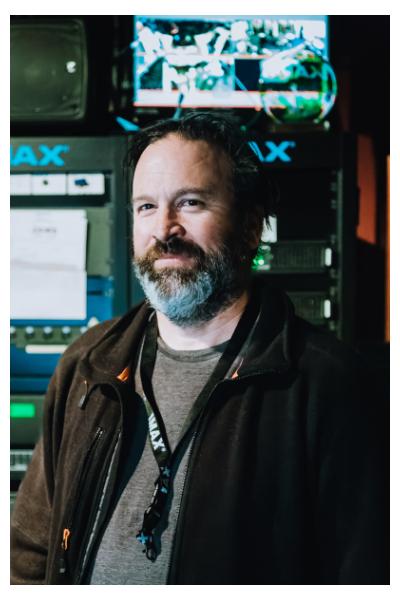
Jason is IMAX® Victoria’s chief projectionist and has been with the theatre since he joined the team as a part-time projectionist in late 1999. Since then, he’s moved up the ladder, overseen the transition from film to digital, and even earned his certification to be the onsite laser safety officer.
Carving out a few minutes to chat between films, Jason sat down with A Day in the Life of… to discuss all things IMAX.
Jason St-Louis: It’s more or less just that a position came up. I had a museum tech background and thought it would be a good idea to take this job in the meantime and maybe eventually branch out to work in exhibits, but it ended up turning into a career. You get the job, there’s two months of training that’s pretty intensive, and once that happens, you’re in.
JS-L: You had these huge prints that you had to thread onto a projector, sync the audio and the film for it. There’s a bunch of relays for it as well, so it’s really hands on. It took quite a long time to train. I actually had nightmares about working up there because it was so stressful. I had a nightmare that the film was wrapped around the door handle and I couldn’t start the shows.
We counted it out and it was 145 steps that you had to do precisely each time before you ran a show. If you missed one, it wasn’t going to run properly. You had 15 minutes and it was like you were doing a dance. But technology kept moving forward and film became outdated.
JS-L: You might think we could automate the process, but there still needs to be someone physically there because there are technical issues. It went from low-voltage relays failing to IT stuff, so now you have to reboot software and run software updates. Instead of prepping huge 500lbs prints, we now ingest content from an external hard drive. We also manage the server, build playlists and calibrate the equipment on a daily basis. The laser boards are cooled with glycol, so that needs to be monitored as well. Day-to-day operations are usually hectic.
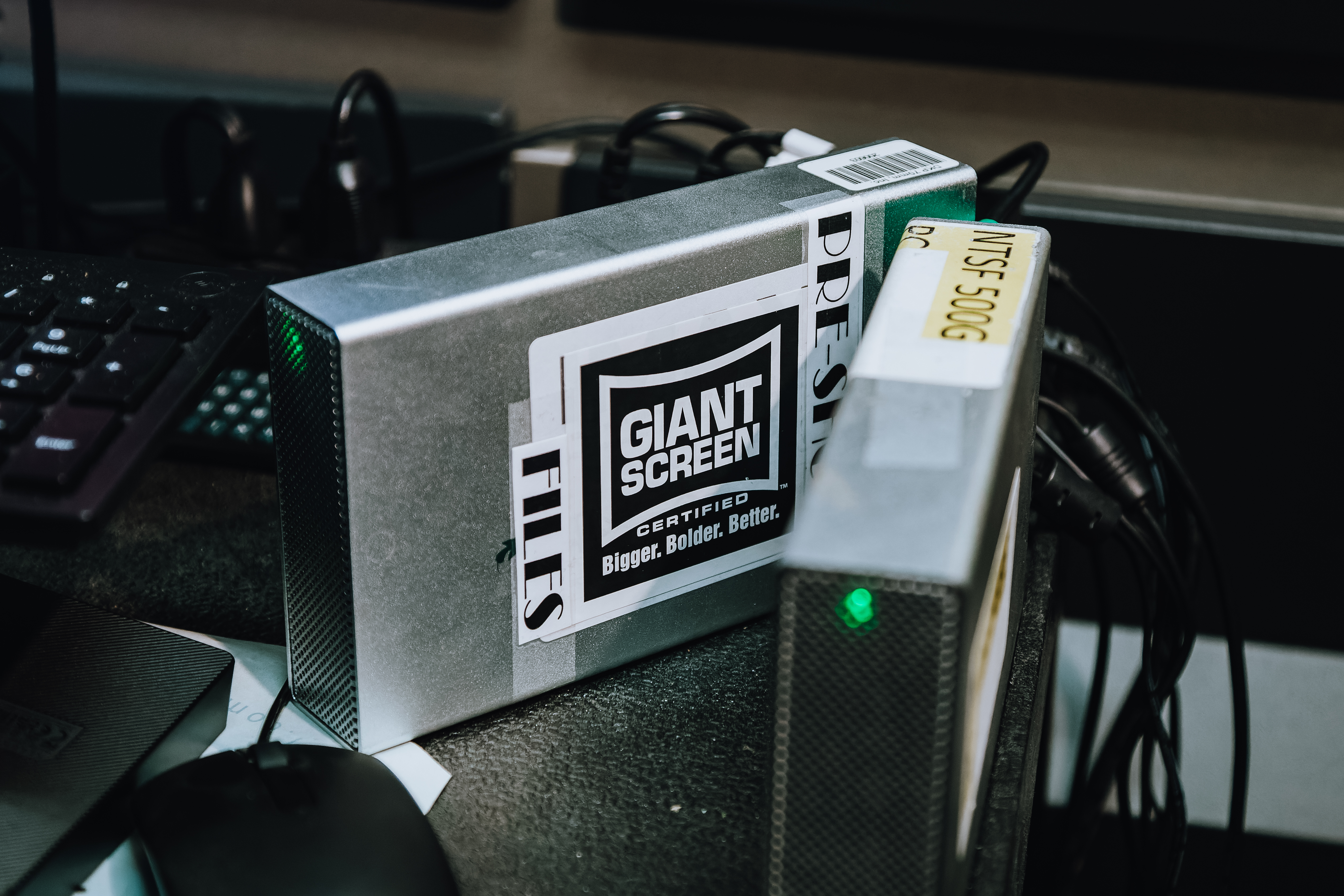
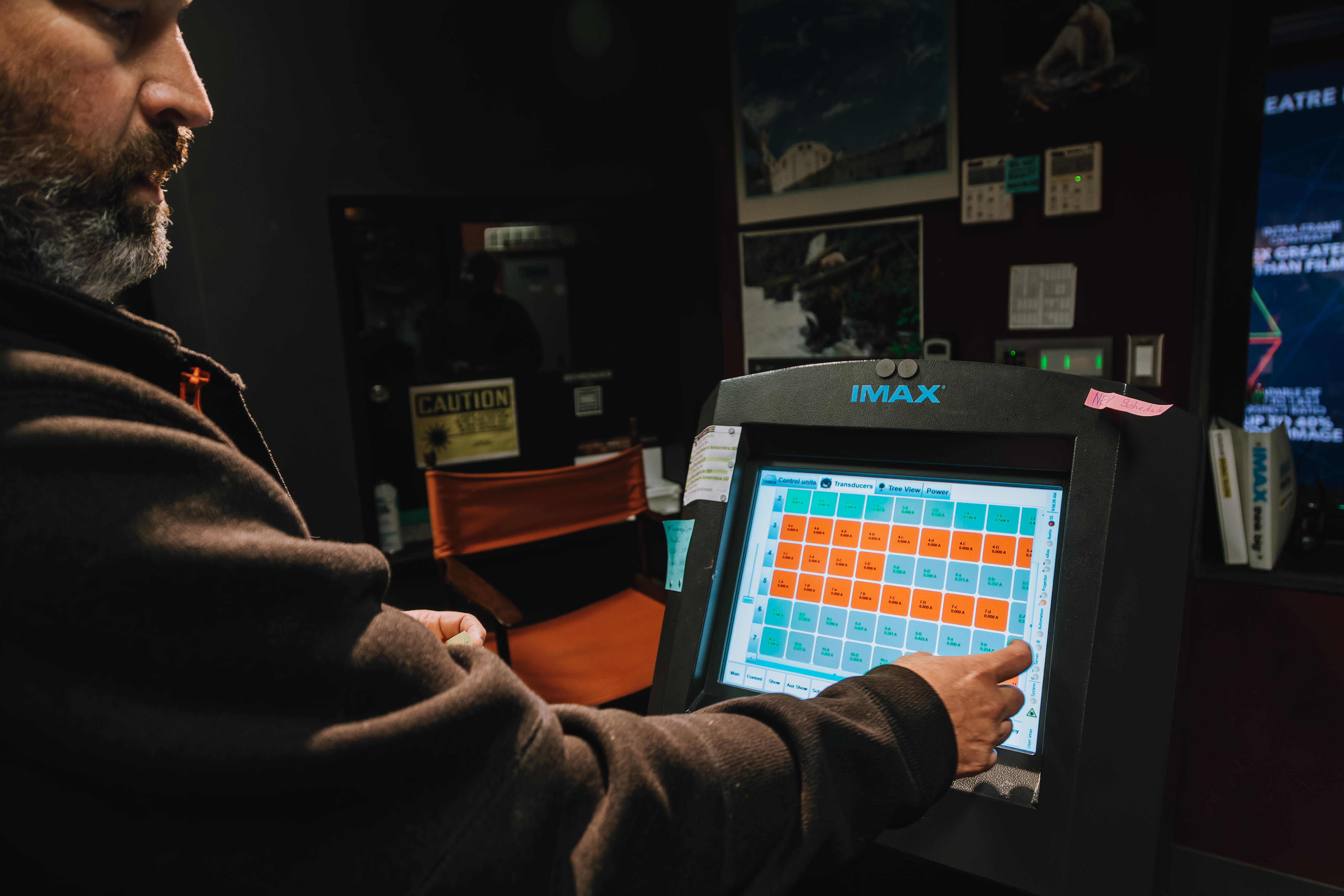
JS-L: We went from working in the private sector to working for the provincial government. It was a successorship, but it was a smooth for us in the booth. There was some uncertainty if we would be able to continue on because there were [pandemic] restrictions on the number of people who could come in and we were running shows with 50 people, but I think that whatever the new mandate is for the museum, there’s a place for us now. A new programming approach that showcases local filmmakers and videographers is in the works. Just this year, we ran some National Film Board films for Truth and Reconciliation Day and the documentary Carbon by Niobe Thompson who's based in Victoria. And with IMAX® Victoria Annual Passes coming back, the theatre is ready to welcome back our devoted passholders.
JS-L: [Laughing]Yeah, it really is. We get to do a lot of cool stuff.
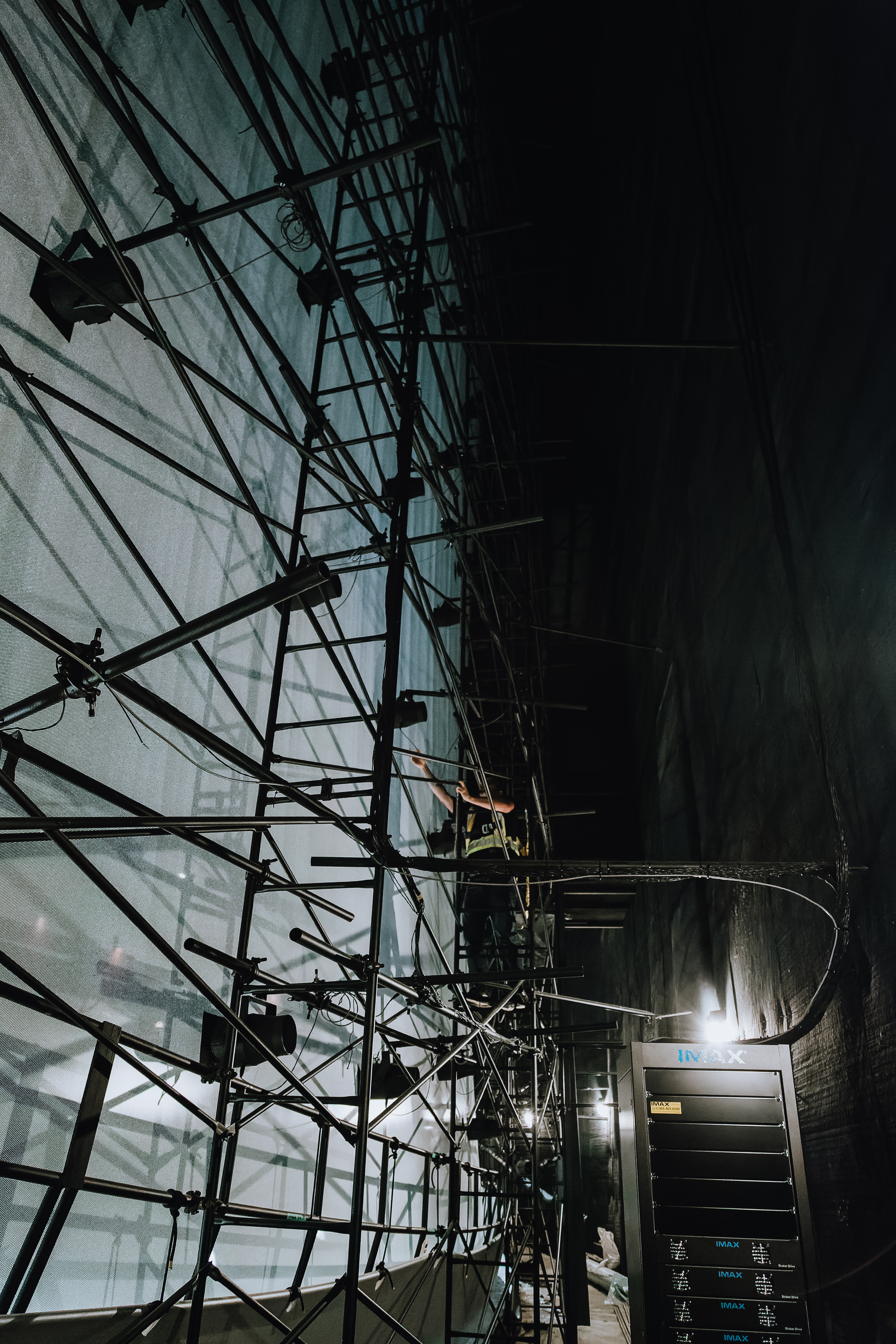
JS-L: We sometimes help videographers run dailies during postproduction. We collaborate with sound engineers, such as Tim Archer, who has worked on many IMAX films and conveniently lives in town. He used the theatre to mix sound on Great Bear Rainforest. Tim came with his crew and there was a moment where we had to pause work because we were waiting on a UPS delivery of the narration soundtrack that Ryan Reynolds recorded that day in LA. It somehow got delayed at the border for a few hours. Once that arrived, Tim was able to set up a portable mixing studio in house and play the tracks back on the 12,000-Watt sound system. Impressive!
JS-L: There are a few coming up that are really exciting, but I’m not allowed to say anything!
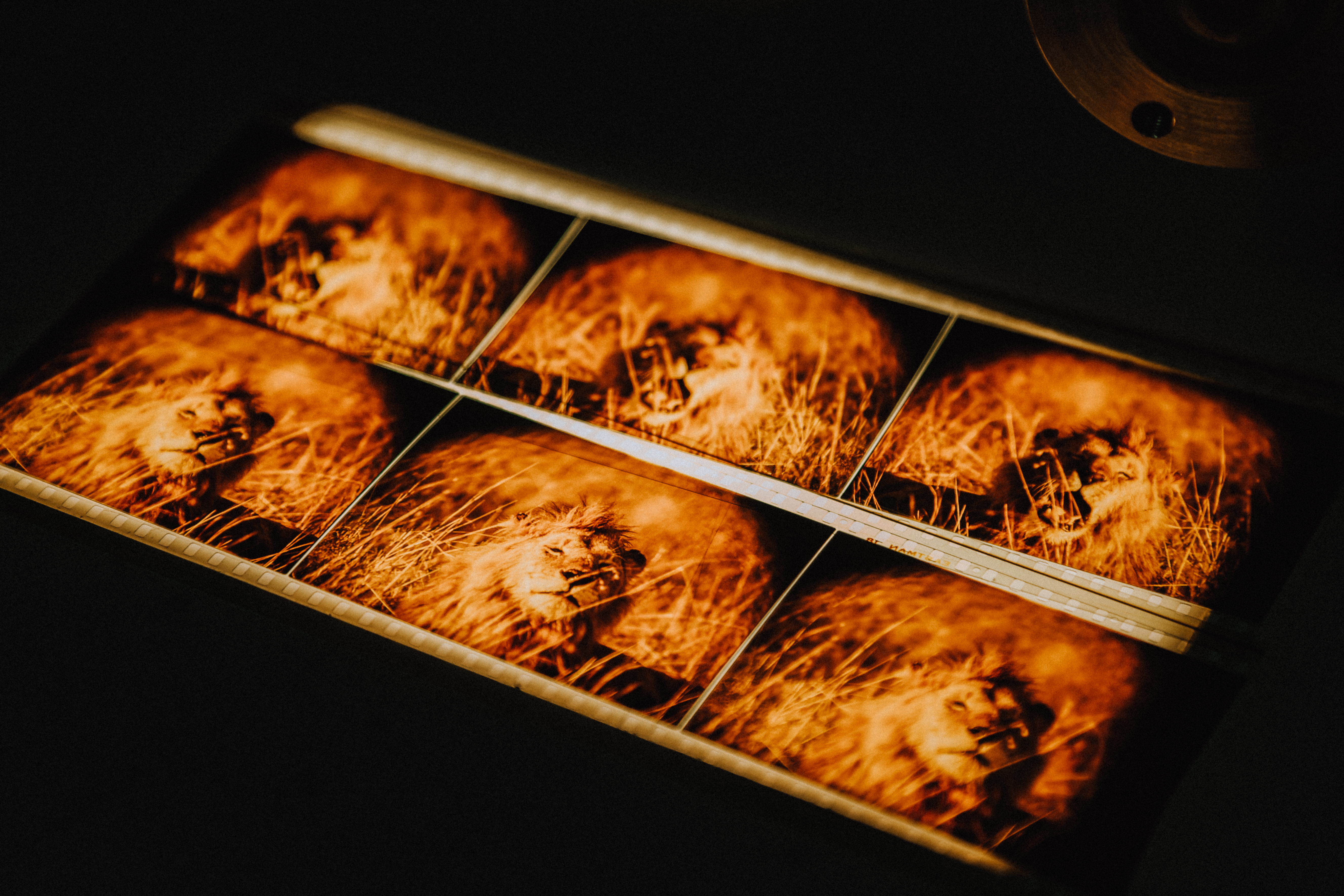
JS-L: A Hollywood movie weighed about 700lbs and came disassembled in three different reels housed in separate aluminum cases. Once it's spliced together on a six-foot diameter platter, we used a mechanical lift to move them around.
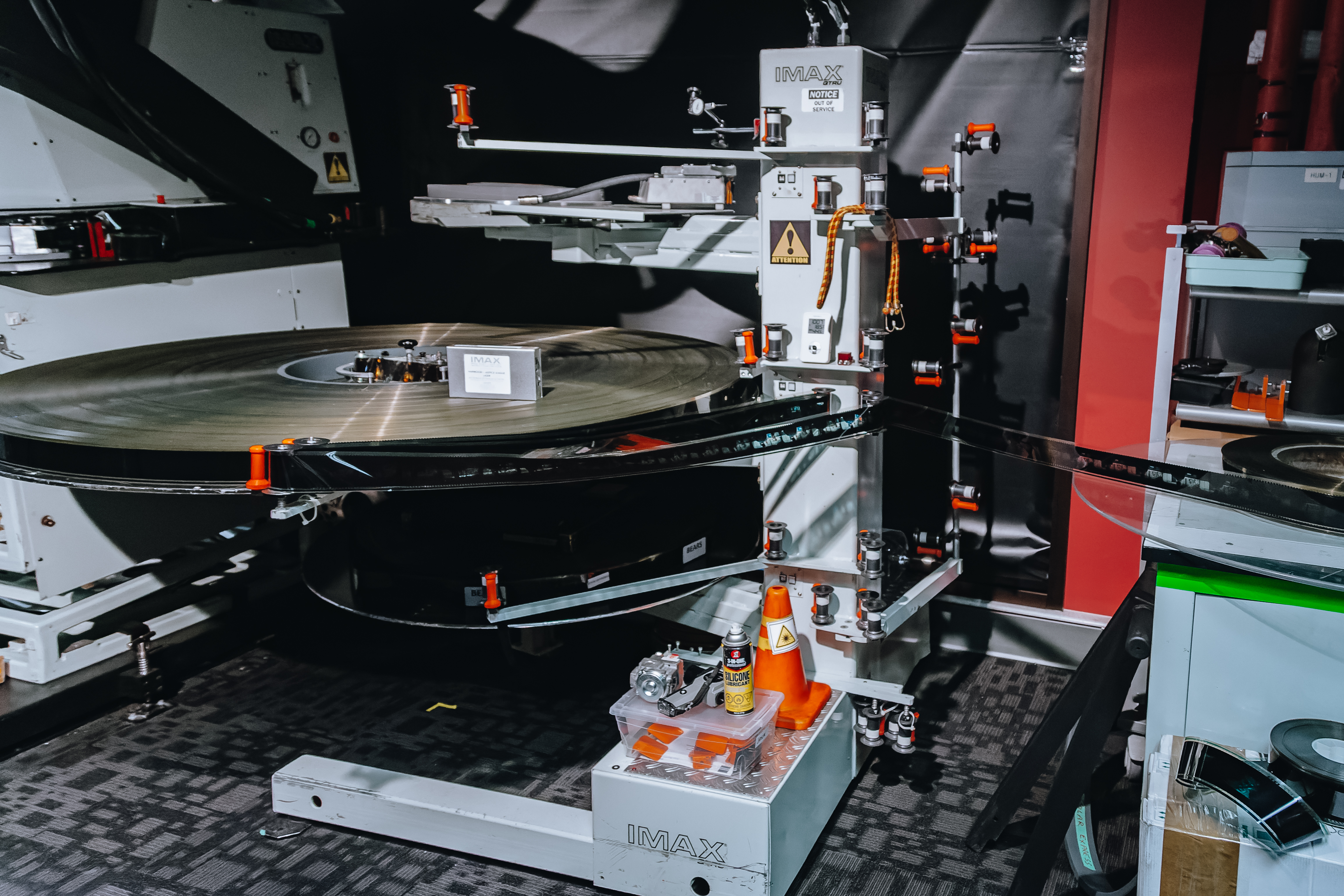
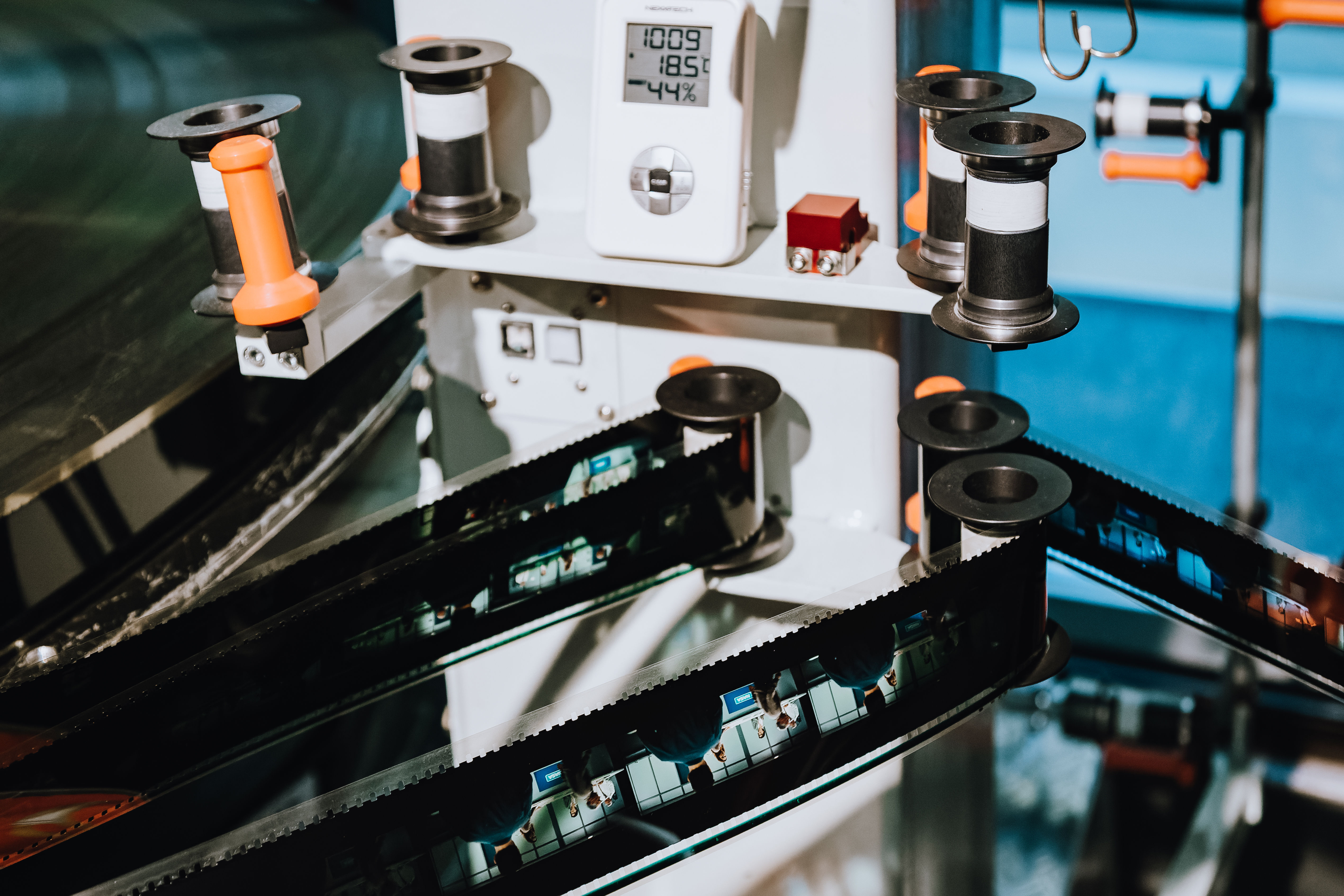
JS-L: We had an incident where Avatar got spilled on the ground and it was done. It was destroyed. We had to get another print expedited from Vancouver and we spent all night splicing like 50 rolls of film together.
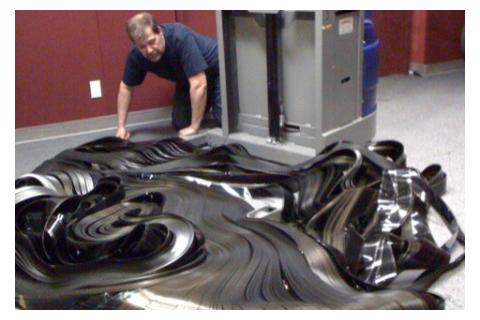
JS-L: You can’t recoil it, it’s impossible. Actually, we had all these other prints too, about 50 documentaries and holiday films, leftover [after the switch to digital] and we went to Kodak to see if they could recycle it into plastic bottles. But the polymer was different and they weren’t able to do it, and we didn’t want it to go into the landfill, so we reached out to Blue Planet Recycling in Vancouver. They were able to take the films and shred them up and add it to concrete as a mix. We shipped nine tonnes of film. I hear some of the concrete was used to rebuild the washed-out bridges on the mainland from last year's floods.
JS-L: I was watching Shackleton’s Antarctic Adventure and I started to smell burning wires. I thought, ‘oh no, something’s frying!’ and when I listened to the audio, it’s looping. “Beyond all hope of rescue. Beyond all hope of rescue.” Like, no way. This is crazy! I was able to switch to the backup system, but it had been looping in the theatre and I just thought that must have been a little creepy for the audience.
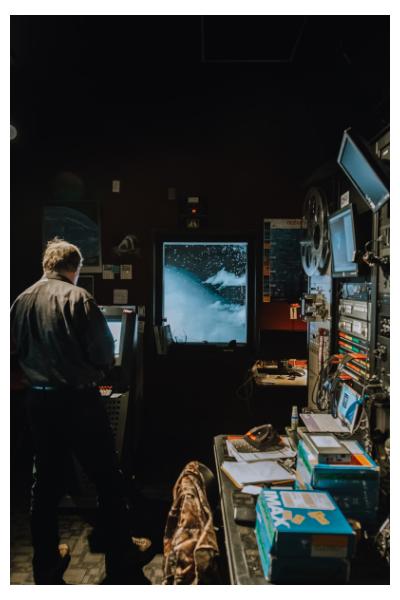
JS-L: The autonomy of the job. I love what I do and I'm devoted to the art of showmanship. The troubleshooting aspect is challenging and you never know what to expect from day to day. There's a viewing window on the second floor and people can look at all the equipment through it. Sometimes you'll see folks completely mesmerized by the huge prints and "strange" equipment. I'll occasionally strike up a conversation about film vs digital and the younger generation always asks, "what's film?" I have a few frames of old film on hand to give them and it makes their day. I've heard countless times, "this is the best part of the museum!" and that, in return, makes my day.
***Some responses have been edited for length and/or clarity***
Want to learn more about the IMAX Experience and why IMAX® Victoria won the Giant Screen Cinema award for Best IMAX Booth in 2019? Discover more below.
Get your IMAX® Victoria Annual Pass beginning November 1: https://imaxvictoria.com/annual-pass/
Learn more about the technology behind IMAX, from threading a film projector through to the ins and outs of laser tech: https://imaxvictoria.com/experience/
Visit IMAX® Victoria with the Royal BC Museum Learning team’s RBCM@Home virtual visit: https://youtu.be/tPoQr2Z8E2U